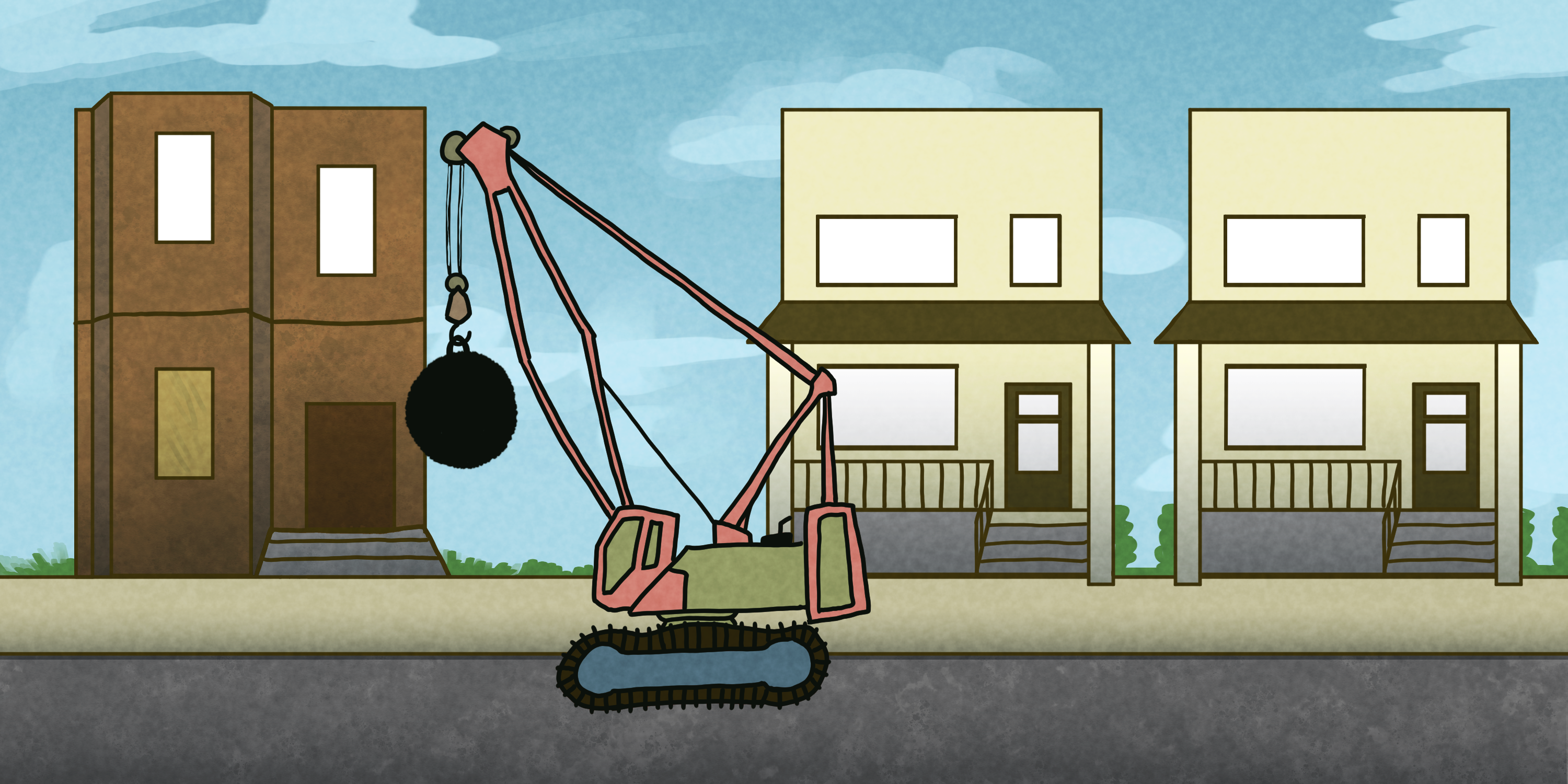On February 17, members of the DePaul community, along with community partners, met for the DePaul Placemaking Summit to address the ongoing gentrification and displacement across the city and means for collective action.
The landscape of homelessness and displacement in Chicago exists at the mercy of a market that decides the terms of accessibility for housing.
The context of how homelessness came to be can be tied to the containment of the city through the institutional expansion of the rest of the city.
Patricia Devine-Reed, a member of the Elders’ Council and advocate for the displaced community, opened Friday’s summit with a statement about DePaul’s role in gentrification and the commitment to positive change in Chicago neighborhoods.
“There is urban renewal, and there is something called urban removal,” Reed said.
DePaul acknowledged its role in gentrifying neighborhoods and the impact it has on communities that are direct targets of gentrification. Located in the heart of the Lincoln Park neighborhood, the university has 30 acres of land for its Lincoln Park campus, with additional space on the Loop campus.
Don Washington, executive director of the Chicago Housing Initiative Coalition, explored the topic of systematic instability, which has a direct impact on the current state of housing and displacement in Chicago.
“We’re embedded in the system of white supremacy that sees housing as a commodity, which means there’s a bottom and top of the market, which means some people who cannot afford to get in the market don’t have housing,” Washington said.
According to a 2020 study conducted by the Chicago Coalition for the Homeless, there are currently over 65,000 residents who are considered homeless and are living in shelters, in-between living, and/or outside, in the city of Chicago.
Many of these “unhoused” residents are victims of a systematic failure as neighborhoods and livelihoods have been impacted by tactics put in place by both local and state-level governments.
Fr. Guillermo Memo Campuzano, vice president for DePaul’s Mission and Ministry division, shared the story of his experiences in international displacement coming from Colombia to the introduction of systematic displacement.
“I was coming from the most dividing country in the world at the time, due to drug trafficking, and many other issues,” Campuzano said. “But the real issue behind the war in Columbia was the control of the land. So, we had the largest number of displaced people in the world.”
Homelessness is one of the many long lastign effects of housing insecurity and gentrification in our community. The common theme shared among community partners and advocates for these unhoused communities is the cause of the lack of structure in local and state governments and systemic failure due to white supremacy.
Ashley Johnson is the program manager for Resident Association of Greater Englewood (R.A.G.E), a group driven to create tangible solutions and mobilization from residents to restore the community. Johnson is one of many community leaders that work to address the complications of gentrification and displacement and its pipeline to homelessness in the city.
“The city of Chicago and white supremacy are the forces that is leading to gentrification, homelessness, and displacement in Englewood,” Johnson said.
Whittney Smith is the deputy director of Lawndale Christian Development Corporation and highlighted working on providing affordable housing in the North Lawndale area.
“The city of Chicago and white supremacy is almost redundant because our institutions are not limited to the city of Chicago. It’s our institutions that are built on that framework,” Smith said.
Gentrification, which leads to displacement, is a violent attack on communities. Those once-established spaces for those in the community are taken from those in the community.
“In North Lawndale, gentrification isn’t our number one issue, because at the hay-day in North Lawndale there were 160,000 residents, and today there are 30,” Smith said. “The issue with that is how people show up to move into communities, and that is rooted in white supremacy and whose comfort is prioritized.”
Community partners and DePaul representatives centered the conversation around dismantling the structures set in place, and uniting as one.
“The sooner we really start talking about gentrification, it’s more than just people moving into a community,” Smith said. “[We need to start] talking about it as a function of how people show up to be in connection with one another, the more real these conversations can be and the better the likelihood it results in something meaningful for the people who experience that displacement.”
The critical issue of approaching homelessness and understanding how to better assist policymakers start with understanding what homelessness is and how it continues to progress as a growing issue.
Community leaders and advocates fight for structural change to combat issues revolving around displacement and gentrification, which ultimately leads to homelessness. Three levels of government – has left 65,000 displaced individuals with loose ends in the system.
“I want to stress to all of us that the biggest trend that we all live in is a system that is not responsible less you have the power to compel it,” Washington said.
Homelessness is a housing problem, and starts at the hands of those in power in our local, state, and national governments. A problem which has several pipelines in how one can be so easily lost in the system, and inevitably ends up on the streets.
“At the top of our market, that also means that there are people who are worth less. We’re all worth less because we’re further away from whiteness. We’re worthless. There are other people who are worthless,” Washington said. “They don’t have the capacity to produce enough to be worth housing.”
DePaul’s goal is to address and provide ‘‘provide thought leadership in addressing pressing issues of social and environmental justice, including global efforts to eradicate street homelessness.”
Header Illustration by Julia Hester




NO COMMENT